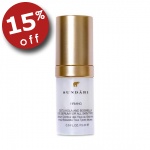Open your eyes to the facts.
Though we’ve all heard the warnings about the dangers of sunbathing and the importance of
sun block, the consequences of sun damage (aside from the temporary sting of sunburn) are initially
invisible and are sometimes hard to comprehend. The truth is, as much as 90 percent of wrinkles, brown spots, and sagging
skin what we usually think of as aging an be attributed to sun damage, says the American Skin Association, a national organization for education on skin health. What’s worse, skin cancer is now the most common cancer, striking more than 800,000 Americans each year, according to the American Cancer Society
If you’re still tempted to head out the door without sun protection, stop to consider what’s going to happen to your skin.
Melanin, the protective pigment found in the epidermis, defends the skin against sun damage by absorbing the sun’s rays and dissipating the energy as heat. The more sun exposure, the more melanin the skin produces, which results in a
suntan sign that the skin has already been damaged by ultraviolet (UVI rays. If sun exposure continues, the UV rays will damage cells and blood vessels in the outer layer of skin, causing the redness and painful inflammation of sunburn, actually a minor burn.
Yet sunburn isn’t the worst result of sun exposure. According to a report in the April 26, 1997, Science News, the UV rays that are not absorbed by melanin may prompt the formation of free radicals, destructive scavenger molecules. Because free radicals lack electrons, they attempt to steal electrons from other molecules, damaging the molecules in the process. Free radicals that get inside a cell can damage the cell’s genetic material and cause mutations, and they may even trigger cancer.
But the damage doesn’t stop there. Urocranic acid, a chemical found in the epidermis, also reacts with ultraviolet light. The reaction also creates free radicals, which then break down the collagen and elastin in the skin, causing wrinkles. In addition, the sun’s rays are thought
to decrease immune system function within the skin, meaning that any invading organisms have a better chance of causing infection.
|




 Today's random forum topics
Today's random forum topics
 What our customers are saying
What our customers are saying